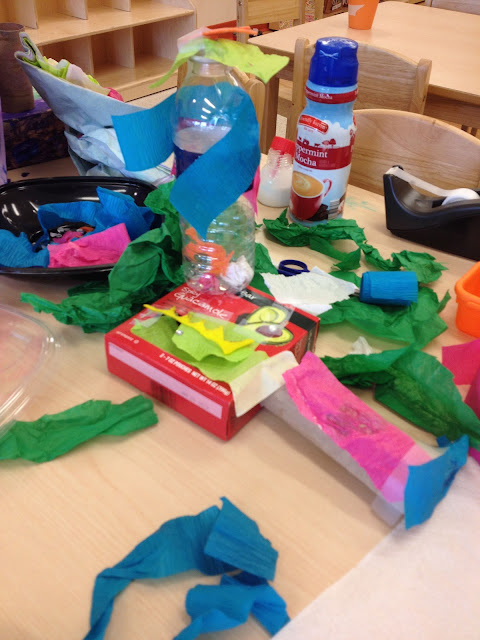Children Working with Recycled Materials
Environmental awareness
Singapore has a stellar reputation for being ecologically conscious of the necessity for recycling and the consequences of not recycling. For families, businesses, and organisations to use, there are numerous recycling procedures in place. These procedures are also included in early childhood institutions. Recycling is taken into account in the MFS curriculum, and kids are made more aware of it. In addition to the necessary commercial equipment required to meet licencing criteria, the Relationships Based Curriculum encourages instructors to develop recycled toys and equipment.
Therefore, both parents and educators need to be aware of the necessity to conserve resources in our environment. If we can also teach our kids the importance of preserving the environment and recycling. Children are growing up in a consumer-focused society, which is a significant reason to bring up the problem of environmental awareness. In-store toys are frequently heavily marketed and associated with movies, television shows, and other commercial concepts. These toys frequently include action figures, dolls, and super heroes that are based on popular children’s television and film characters. While there may be a role for these toys in children’s play,According to several experts, using these play items excessively can limit the “scripts” that kids employ in their imaginative play. Children’s play is controlled by figurines of particular characters and objects intended for particular uses, which may constrain their inventiveness. Better toys are those that can be used in a variety of ways, and parents need to be aware that not all toys can foster children’s creativity and improve their cognitive development. Simple objects enable a child to organise their play in various ways and think imaginatively in their play without being constrained by the personalities portrayed by commercial toys or their functions.
Many possible recycled objects enter homes on a daily basis, and some of these are safe to use with kids in addition to the toys that families purchase from stores. We do, however, stress how crucial safety is. For instance, polystyrene is not a good material to use because it can easily break and be consumed by young infants. There are numerous more secure materials, nevertheless, that can be utilised. For instance, big cardboard boxes can be transformed into fantastic playhouses and tunnels.a puppeteer. Table calendars can be converted into photo albums, and old magazines can be made into vibrant decorations or collages. Egg cartons and toilet paper rolls are both great supplies for crafts. When kids outgrow their clothes, dress up dolls in them and utilise adult clothing to encourage theatrical play.
Additional safety considerations include:
- Avoid using or playing with small children when using plastic bags.
- Allow enough room for movement by using tables or the floor.
- Ensure that the recyclable materials are sterile, pristine, and clean.
- Look for any hazardous paint.
- Keep young children away from small, loose parts.
- Verify that the materials are free of sharp edges and staples.
- Put materials on low shelves so kids can easily get them.
Recycled materials offer open-ended learning opportunities
These are materials that young children can use and manipulate in varied and imaginative ways, as opposed to the consumer toys previously stated. Such open-ended materials have the following characteristics:
Additional safety considerations include:
- can be assembled, disassembled, redesigned, rolled, piled, transported, and utilised in a variety of ways depending on the child’s age, ability, and interests.
- can be freely explored and utilised by kids in whatever way they choose, unrestricted.
- either natural (such as twigs, leaves, shells, and stones) or man-made (such as bottle caps, toilet paper rolls, cardboard boxes, and containers) recyclable items.
Benefits of playing with recycled, open-ended materials
These are materials that young children can use and manipulate in varied and imaginative ways, as opposed to the consumer toys previously stated. Such open-ended materials have the following characteristics:
Additional safety considerations include:
- Young children’s imaginative play, inventiveness, and problem-solving abilities are stimulated as they employ recyclable things in various ways.
- Making homemade toys from scratch with older kids is a great way to expand their imagination and abilities.
- As they work with various materials, kids gain knowledge about their own surroundings.
- Additionally, producing or building things is a process that kids learn about and love.
- Recycled materials could encourage kid-led play. Many of the items and materials in the environment will encourage youngsters to think since they are flexible.
- Children will start to engage in dramatic play around the age of two, which is crucial for the growth of thinking abilities. Children who make their own playthings contribute to the development of a play-friendly environment.
- Children have the chance to make their own decisions and creations as they create their own toys, which helps them gain confidence and independence.
- Children have the freedom to express themselves.
- Making items out of recycled materials gives kids the chance to use language to describe what they have built, how they made it, and how it works.
- Children who design and make things from scratch develop a sense of ownership.
- Since they are cheap, they offer amusement at a very low price.
Concluding comments
Compared to some commercially produced toys that can only be used one way and so restrict children’s creativity and imagination, recyclable materials are open-ended and offer additional learning opportunities. Our kids become more environmentally conscious when we teach them to recycle and reuse common items.
Toutes droits réservés. Without the prior consent of the Copyright holder, no part of this book may be duplicated, stored in a retrieval system, or transmitted in any formats or by any means, whether mechanical, electronic, photocopying, recording, or otherwise.





